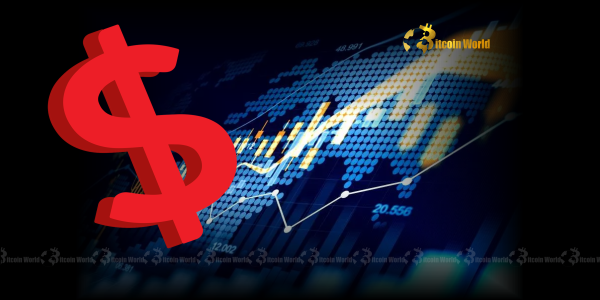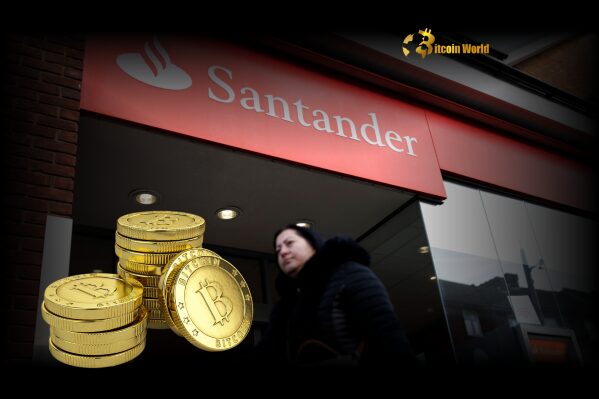BitcoinWorld

USD Trend Reversal: Bank of America Unveils Pivotal Shifts in Global Currencies
In the dynamic world of global finance, shifts in major currency trends can send ripples across all asset classes, including the rapidly evolving cryptocurrency market. For those invested in digital assets, understanding the broader macroeconomic landscape is crucial. Recent signals from Bank of America (BofA) suggest a significant USD Trend Reversal against major G10 currencies is on the horizon. This potential shift holds profound implications, not just for traditional investors but also for crypto enthusiasts who track stablecoin valuations, global liquidity, and risk appetite. A weakening U.S. Dollar could, for instance, fuel a ‘risk-on’ sentiment, potentially benefiting Bitcoin and other cryptocurrencies, while a strengthening dollar might indicate capital flight to safety, impacting risk assets negatively. Let’s delve into what BofA is forecasting and what it means for your financial outlook.
What’s Driving the Anticipated USD Trend Reversal?
Bank of America’s analysis points to several key factors that are converging to potentially trigger a significant USD Trend Reversal. For years, the U.S. Dollar has largely enjoyed a position of strength, driven by factors such as aggressive interest rate hikes by the Federal Reserve, a resilient U.S. economy, and its safe-haven status amidst global uncertainties. However, the landscape is evolving. Here are the primary drivers BofA identifies:
- Monetary Policy Divergence: While the Federal Reserve may be nearing the end of its tightening cycle, or even considering cuts in the future, other G10 central banks (like the European Central Bank or Bank of England) might still have room for further rate hikes or maintain higher rates for longer. This narrowing interest rate differential could reduce the attractiveness of holding USD.
- Inflation Dynamics: U.S. inflation appears to be cooling, potentially faster than in some other major economies. If inflation outside the U.S. remains stickier, it could prompt other central banks to maintain tighter policies, supporting their currencies against the dollar.
- Economic Growth Rebalancing: While the U.S. economy has shown remarkable resilience, there are signs of a potential slowdown. Concurrently, other G10 economies might be showing nascent signs of recovery or more robust growth, shifting the global growth advantage away from the U.S.
- Global Liquidity and Risk Appetite: A less aggressive Fed policy could inject more liquidity into global markets, potentially reducing the demand for the dollar as a safe haven and encouraging investment in riskier assets, including cryptocurrencies.
Impact on G10 Currencies: Who Wins and Who Loses?
A significant USD Trend Reversal naturally implies a shift in fortunes for other G10 Currencies. BofA’s outlook suggests that some currencies are poised to benefit more than others from a weakening dollar. Understanding these dynamics is essential for anyone tracking global capital flows.
Here’s a general outlook on how key G10 currencies might fare:
| Currency Pair | BofA’s Expected Trend (vs. USD) | Key Supporting Factors |
|---|---|---|
| EUR/USD | Appreciation | Eurozone economic recovery, ECB hawkishness, improved energy outlook. |
| USD/JPY | Depreciation (JPY strengthens) | Potential Bank of Japan policy shift (ending negative rates), higher Japanese inflation. |
| GBP/USD | Appreciation | UK inflation persistence, Bank of England maintaining higher rates, improving economic sentiment. |
| AUD/USD & NZD/USD | Appreciation | Commodity price stability/recovery, China’s economic reopening and growth. |
| USD/CAD | Depreciation (CAD strengthens) | Strong oil prices, Bank of Canada’s policy stance. |
| USD/CHF | Depreciation (CHF strengthens) | Swiss National Bank’s anti-inflationary stance, safe-haven demand (though less prominent than USD). |
This rebalancing could lead to increased purchasing power for those holding these strengthening G10 currencies when converting to USD-pegged assets, including many stablecoins. Conversely, for those holding primarily USD, the relative value of international goods and services might become more expensive.
Navigating the Forex Market Analysis: Key Indicators to Watch
For investors seeking to capitalize on or protect against the anticipated USD Trend Reversal, a robust Forex Market Analysis is indispensable. This involves scrutinizing a range of economic indicators and central bank communications. Here are the crucial elements to monitor:
- Inflation Data (CPI, PPI): Keep a close eye on consumer price index (CPI) and producer price index (PPI) releases from major economies. Persistent inflation outside the U.S. could signal continued rate hikes from other central banks, strengthening their currencies.
- Employment Figures: Job reports (like Non-Farm Payrolls in the U.S. or unemployment rates in the Eurozone) provide insights into economic health and potential central bank actions. Strong employment often supports hawkish monetary policy.
- Central Bank Statements and Minutes: The Federal Reserve, European Central Bank, Bank of Japan, and Bank of England’s policy meetings, press conferences, and meeting minutes offer direct clues about their future interest rate paths and economic outlooks. Pay attention to any shifts in language or forward guidance.
- GDP Growth: Gross Domestic Product (GDP) reports indicate the overall health and growth trajectory of an economy. Divergent growth rates among G10 nations can influence currency valuations.
- Trade Balances: A country’s trade balance (exports minus imports) can reflect its economic competitiveness and influence demand for its currency.
- Geopolitical Developments: Global events, from conflicts to trade disputes, can significantly impact currency markets by triggering safe-haven flows or disrupting supply chains.
Combining fundamental analysis (economic data, central bank policy) with technical analysis (chart patterns, support/resistance levels) can provide a more comprehensive view of potential currency movements.
The Evolving Dollar Outlook: What It Means for Investors
The evolving Dollar Outlook has far-reaching implications that extend beyond just currency traders. For the average investor, especially those with exposure to international markets or cryptocurrencies, understanding the dollar’s trajectory is paramount. A weaker dollar generally makes U.S. exports more competitive and can boost the earnings of U.S. multinational corporations. Conversely, a stronger dollar makes imports cheaper and can weigh on export-oriented companies.
From a crypto perspective, the dollar’s strength or weakness directly impacts the broader risk appetite. When the dollar is strong and seen as a safe haven, investors often pull capital from riskier assets like cryptocurrencies. If the dollar weakens, it can signal a ‘risk-on’ environment, potentially driving capital into alternative investments, including digital assets. Furthermore, for those holding significant amounts of USD-pegged stablecoins (like USDT or USDC), a weakening dollar implies a slight erosion of purchasing power against other major fiat currencies and potentially against real assets. This dynamic underscores the interconnectedness of traditional finance and the crypto ecosystem.
Preparing for Global Currency Shifts: Actionable Insights
With Bank of America signaling potential Global Currency Shifts, proactive preparation is key. Whether you’re a seasoned investor or new to the financial markets, here are some actionable insights to consider:
- Diversify Your Portfolio: While the U.S. Dollar remains a cornerstone, consider diversifying your holdings across different assets and even different currencies if your investment thesis allows. This could include exposure to strong G10 currencies or assets denominated in them.
- Monitor Macroeconomic Data Closely: Stay informed about key economic indicators and central bank announcements from the U.S. and other G10 nations. These will provide early signals of shifts in monetary policy and economic health.
- Re-evaluate Stablecoin Strategy: If a significant portion of your crypto holdings is in USD-pegged stablecoins, be aware of the potential for relative value changes. While stablecoins are designed to maintain parity with the dollar, the dollar itself can fluctuate against other major global currencies. Some might consider exploring stablecoins pegged to other major currencies or basket-pegged stablecoins, though these are less common.
- Consider Hedging Strategies: For businesses or individuals with significant international transactions or assets denominated in foreign currencies, exploring hedging strategies (e.g., using forward contracts or options) can mitigate currency risk.
- Invest in Globally Diversified Assets: Companies with significant international revenue streams or ETFs that track global indices might offer a natural hedge against specific currency movements.
- Stay Flexible: The forex market is highly dynamic. Be prepared to adjust your strategies as new data emerges and the economic landscape evolves.
The benefits of being prepared for these shifts include potentially protecting your purchasing power, identifying new investment opportunities, and making more informed decisions across your entire financial portfolio.
Conclusion: Navigating the Tides of Currency Change
Bank of America’s signal of a looming USD Trend Reversal against major G10 currencies is a crucial piece of information for anyone navigating the complex global financial landscape. This isn’t just about the strength or weakness of a single currency; it’s about the rebalancing of economic power and monetary policy across the world’s leading economies. For cryptocurrency investors, these shifts directly influence global liquidity, investor sentiment, and the relative value of stablecoin holdings. By understanding the drivers behind these changes, closely monitoring key indicators in Forex Market Analysis, and adapting your strategies based on the evolving Dollar Outlook and broader Global Currency Shifts, you can position yourself to not only mitigate potential risks but also uncover new opportunities in a constantly interconnected financial world. Staying informed and agile will be your most valuable assets as these pivotal currency movements unfold.
To learn more about the latest Forex market trends, explore our article on key developments shaping the US Dollar and global liquidity.
This post USD Trend Reversal: Bank of America Unveils Pivotal Shifts in Global Currencies first appeared on BitcoinWorld and is written by Editorial Team





